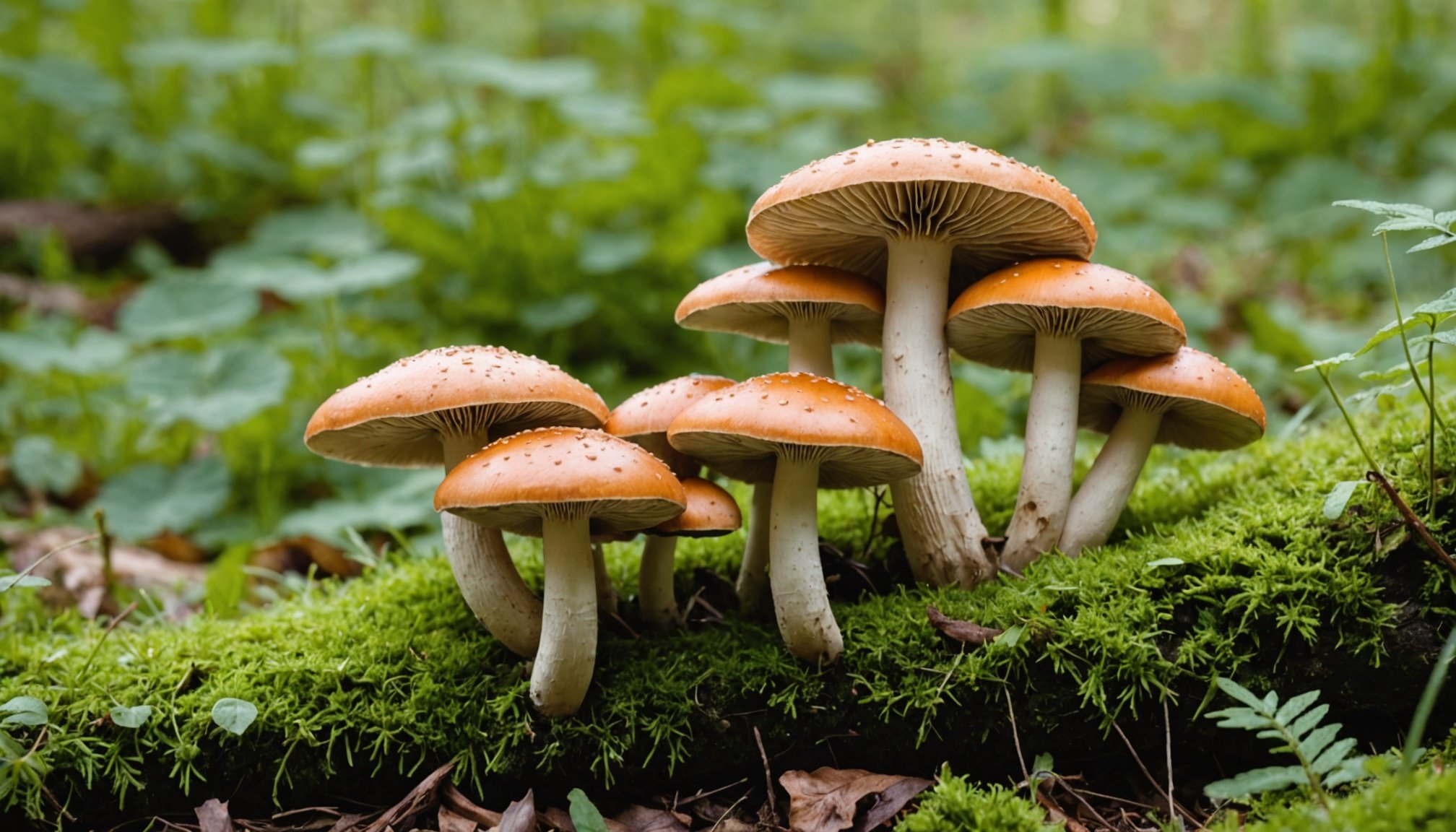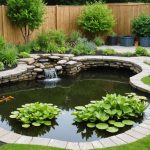Introduction to Edible Mushrooms in Shady UK Gardens
Growing edible mushrooms in shade gardening is an exciting venture for UK gardeners, offering a unique opportunity to utilise shaded areas that might otherwise remain unused in a backyard. The benefits are numerous, including the ability to produce a sustainable and nutritious food source. These fungi thrive in the cooler, damp environments provided by shaded spots, making them an ideal crop for shaded shots.
An understanding of the local climate and soil conditions is crucial when cultivating mushrooms. Mushroom growth relies heavily on specific temperature and moisture levels; therefore, gardeners need to tailor their growing environments accordingly. For instance, certain species of edible mushrooms may prefer a particular pH level or soil type prevalent in shaded UK gardens. By aligning these factors with the innate preferences of the mushrooms, gardeners can enhance their yield significantly.
En parallèle : Choosing the Perfect Indoor Plants for Low-Light UK Homes: A Care Guide
Common misconceptions about mushroom cultivation often deter potential growers. Some might incorrectly assume that mushrooms require constant light or that they are particularly prone to pests. However, many mushroom species are well-suited to the shady confines of a typical UK garden, requiring less light than vegetables or flowers. Addressing these misunderstandings can open up rich possibilities for shade gardening enthusiasts, making productive use of any UK backyard mushrooms.
Best Edible Mushroom Varieties for Shade
Choosing the right mushroom varieties for shaded areas can yield delicious and nutritious harvests. Let’s explore the top edible mushrooms suited for these conditions, focusing on species selection.
Cela peut vous intéresser : The Ultimate Guide to the Ideal Season for Pruning Fruit Trees in the UK
Shiitake
Shiitake mushrooms are among the most popular choices for growing in shade. These mushrooms thrive on hardwood logs and offer a robust, earthy flavour that enhances many dishes. They contain an array of nutrients, including vitamin D, and are known for their immune-boosting properties. Shiitake mushrooms typically have a moderate growth rate, taking a few months to mature.
Oyster
Oyster mushrooms are another excellent choice for shaded environments. Known for their delicate texture and mild taste, they adapt well to different substrates such as straw, coffee grounds, or sawdust. Oyster mushrooms grow relatively quickly, sometimes rewarding you with clusters within weeks. Additionally, they are celebrated for their high protein content and antioxidants.
Selecting Suitable Strains
When selecting edible mushrooms for shade, consider the local climate to ensure optimal growth. Some strains may perform better in humid areas, while others prefer cooler temperatures. A bit of research into local success stories can help identify which strains thrive in specific regions. Look out for climate-appropriate strains to bolster your cultivation efforts and ensure a fruitful yield.
Cultivation Techniques for Shaded Mushrooms
Mushroom cultivation can thrive using a variety of growing techniques, especially in shaded environments where conditions are less direct and temperatures are moderate. Two popular methods include using logs and straw, each offering unique benefits and requiring specific care.
When growing mushrooms on logs, it is essential to choose hardwood logs, such as oak or maple, as they provide the necessary nutrients and support for growth. Begin by drilling holes into the logs, inserting spawn, and sealing with wax to preserve moisture. This technique suits shaded areas as it mimics the natural forest floor environment.
Alternatively, straw cultivation is another winning strategy for mushroom enthusiasts. This method involves pasteurizing straw to eliminate contaminants and then layering it with spawn. The shady environment ensures consistent moisture levels, crucial for successful growth.
Indoor setups can also complement shade cultivation by controlling temperature and humidity. Employing these methods, maintaining cleanliness is of utmost importance. Contamination risks are high when mould or other fungi compromise yield.
Effective shade cultivation hinges on these approaches, offering an optimal habitat that simulates natural growing conditions. Successful mushroom growers consistently practice clean techniques, safeguarding their crops and ensuring healthy, bountiful harvests.
Suitable Growing Mediums for Edible Mushrooms
Selecting the right growing mediums is crucial for successful mushroom cultivation. Edible mushrooms thrive in various mushroom substrates, each offering unique benefits. Common choices include wood chips, straw, and sawdust. These materials provide a rich environment for mushrooms to flourish.
Wood chips are an excellent cultivation material due to their availability and nutrient content. They mimic natural forest floors where many mushrooms grow, offering an ideal medium for species like Shiitake. Straw, on the other hand, is highly suitable for oyster mushrooms. Its porous structure supports robust mycelium growth, and it’s particularly effective when pasteurised properly.
Preparing and sterilising these growing mediums is essential to prevent contamination. Start by soaking the straw or wood chips to increase moisture content, crucial for mushroom growth. Following this, sterilisation, either through steaming or chemical treatment, is necessary to eliminate competing organisms.
Comparing natural substrates to commercial options reveals distinct advantages and drawbacks. Natural growing mediums like wood chips and straw are cost-effective and environmentally friendly. Yet, they might demand more preparation time. Commercial substrates, however, are premixed and can save time but often come at a higher price. This trade-off between convenience and cost is a key consideration for mushroom cultivators.
Climate Considerations for Growing Mushrooms in the UK
When embarking on mushroom cultivation in the UK, understanding the UK climate is paramount. Local climate variations such as humidity and temperature can dramatically influence mushroom growth. The UK’s temperate climate, with its mild winters and moderate summers, generally supports mushroom cultivation well. Yet, certain areas may experience more extreme conditions which can affect yield and quality.
Humidity is a vital component, as mushrooms thrive in moist environments. Success depends on maintaining appropriate moisture levels, especially during drier months. Temperature also plays a critical role. Most mushroom species prefer temperatures between 10°C and 18°C, which aligns well with the UK climate. However, extreme cold or unexpected heatwaves can impede growth.
To combat these environmental factors, creating a microclimate can offer a solution. This involves enhancing a shaded area’s natural moisture retention, perhaps by adding damp sawdust or straw. Ensuring these shaded areas replicate a forest floor’s dampness and coolness can significantly benefit fungi development.
As seasons change, ensure you monitor these critical mushroom growth conditions. During spring and autumn, which typically provide ideal growing conditions, regularly check humidity and temperature levels. In summer, additional measures might be needed to manage heat, while winter may necessitate protecting mushrooms from frost.
Practical Care and Maintenance Tips
To promote the healthy growth of mushrooms, establishing a series of daily and seasonal care routines is crucial. Daily observation plays an important role in mushroom care, as it allows for timely identification of changes in growth and health. Monitoring the growth environment for optimal humidity is essential, as mushrooms thrive in moisture-rich conditions. Use a hygrometer to ensure that relative humidity levels remain between 85% and 95%.
When it comes to preventing pests and diseases, cleanliness is key. Maintain a clean space by removing any debris or rotting organic matter around your growing area, which can harbour pathogens or attract pests. Implementing rigorous cultivation practices, such as proper ventilation, can also help mitigate the risk of mildew and fungal diseases. Seasonal adjustments may be necessary to maintain consistent temperatures and humidity levels suitable for specific mushroom varieties.
For harvesting, timing and technique greatly affect yield and flavour. Harvest mushrooms just before their veils break open to preserve their texture and flavour quality. Gently twist and pull or use a clean knife to cut them at the base without damaging the mycelium. With regular attention and proper maintenance, mushroom cultivators can enjoy a fruitful and tasty harvest.
Challenges and Solutions in Growing Shaded Edible Mushrooms
Growing shaded edible mushrooms brings about a range of challenges which can discourage novice cultivators. Common issues include mold growth, due to high humidity and limited air circulation, and insufficient light, which affects mushroom development and yield. Understanding these mushroom cultivation issues is key to successful growing.
Firstly, to tackle mold, consistent monitoring is essential. Create a sterile environment using sanitised equipment and ensuring proper ventilation. Preventative measures such as managing humidity levels and using fungicides sparingly can also be beneficial. Insufficient light is another roadblock. While mushrooms thrive in shaded environments, some light is still required for optimal growth. Choose north-facing windows or support natural light with low-intensity grow lights.
For beginner growers, engaging in problem-solving is vital. Recognising signs of distress in your mushroom crop early allows for quick adjustments, minimising losses. Get involved in online forums and community groups which offer wealths of resources for further assistance, sharing both successes and failures to learn collectively.
Finally, consider the importance of networking. Community support networks can provide valuable insights, as experienced growers often share solutions pertaining to specific challenges you may encounter. That collaborative support is the backbone of many a successful mushroom cultivation journey.
Visual Guides and Diagrams for Growing Mushrooms
Visual aids are indispensable tools in the world of mushroom cultivation. They help simplify the often intricate processes involved, allowing growers to visualise and better understand each step of the growing journey. From spawn preparation to fruiting conditions, a well-crafted visual guide ensures clarity and efficiency.
Diagrams play a crucial role in depicting various mushroom growing techniques. They illustrate the setup with precision, offering an easy-to-follow visual reference for arrangements like the monotub setup or the use of grow kits. Often, such diagrams highlight critical elements such as humidity levels, light exposure, and air circulation.
Creating personal visual guides is a rewarding endeavour. By sketching or designing diagrams tailored to your specific needs, you can address unique challenges and preferences in your cultivation space. Numerous resources online offer templates and tools to kickstart this process, allowing for customization and updating as your skills grow.
For those seeking comprehensive aids, many books and websites provide ready-made growing guides enriched with illustrations. These range from beginner-level to expert resources, catering to different skill sets while fostering an informed and satisfying growing experience.











